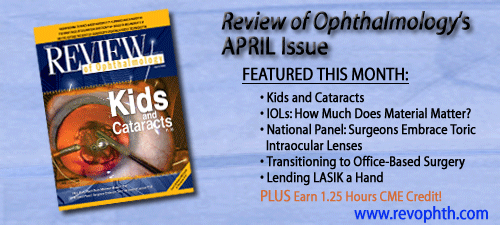
| |
Volume 8, Number 14
|
Monday, April 7, 2008
|
 |
||

|
||

|
||
 |
||
 |
||
BRIEFLY
|
|
|
|||||||
|
||||||||||||||
| Subscriptions:Review of Ophthalmology Online is provided free of charge as a service of Jobson Publishing, LLC. If
you enjoy reading Review of Ophthalmology Online, please tell a
friend or colleague about it. Forward this newsletter or send this address: [email protected].
To change your subscription, reply to this message and give us your old
address and your new address; type "Change of Address" in the
subject line. If you do not want to receive Review of Ophthalmology
Online,click here. Advertising: For information on advertising in this e-mail newsletter or other creative advertising opportunities with Review of Ophthalmology, please contact publisher Rick Bay, or sales managers James Henne, Michele Barrett or Kimberly McCarthy. News: To submit news, send an e-mail, or FAX your news to 610.492.1049 |














